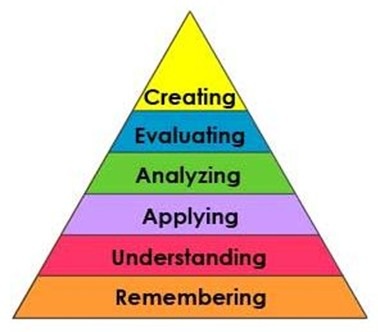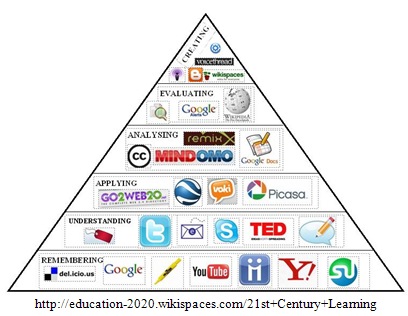The Role of Technology in an Emerging ELT Constructivist Pedagogy
Mehmet Haldun Kaya, Turkey
Mehmet Haldun Kaya holds the Cambridge ESOL-DELTA qualification. He is an approved Cambridge-ESOL Young Learners Oral Examiner, and a CELTA tutor and administrator. He has been involved in teaching, in-service training and teacher development at the Izmir University of Economics, School of Foreign Languages for more than 10 years.
E-mail: haldun.kaya@ieu.edu.tr , haldun.kaya@izmirekonomi.edu.tr

Menu
Introduction
Constructivist learning environment
Constructivist learning and the use of technology
Applications
Implications
References
The internet, a wide variety of web-based tools and specially-designed computer programmes have added a new dimension to English language teaching and learning, thereby enriching the alternatives in ELT. As language instructors and learners have been provided with many different resources and applications in addition to the ordinary means used in the traditional pedagogy, such as course books and boards, it is essential to revise the teaching approaches, tools, learning environment, interaction patterns, teacher and students’ roles in the pedagogy of the 21st century.
Over the years, there has been much research aimed at defining and exploring more effective language teaching approaches. Traditional approaches to second language pedagogy focus on the teaching of the language structures and forms with little emphasis on processing meaning or active communicative or authentic use of the language (Cummins, 2001). Today, the shift from language ‘analysis’ to language ‘use’ allows a greater emphasis on interaction. Communication is no longer regarded as an end in itself, but as a tool for participating in socially meaningful activities.
This article discusses the role of technology in creating a social constructivist environment, before considering a number of practical applications, and highlighting some implications for English language teaching.
Constructivist learning has developed as a compelling approach to teaching. According to Vygotsky, learning occurs through interactions with the environment and the people in it. In constructivism, ‘knowledge’ is actively constructed by learners as they are trying to make sense of their experiences (Perkins, 1991). The constructivist approach also emphasizes the importance of context in learning (Duffy and Jonassen, 1991), and stresses that the learning of knowledge could only be achieved by engaging in meaningful activities, and that learning is a continuous, life-long process resulting from acting in situations (Brown, 1989).
Brooks and Brooks (1995) demonstrated the differences between the traditional and constructivist approaches as follows:
| Traditional Classrooms | Constructivist Classrooms |
| Strict adherence to fixed curriculum is highly valued. | Pursuit of students’ questions is highly valued. |
| Curricular activities rely heavily on textbooks and workbooks. | Curricular activities rely heavily on primary sources of data and manipulative materials. |
| Students are viewed as "blank slates" on which information is etched by the teacher. | Students are viewed as thinkers with emerging theories about the world. |
| Teachers generally behave in a didactic manner, disseminating information to students. | Teachers generally behave in an interactive manner, mediating the environment for students. |
| Assessment of student learning is viewed as separate from teaching and occurs almost entirely through testing. | Assessment of student learning is interwoven with teaching and occurs through teacher observations of students at work and through exhibitions and portfolios. |
| Students primarily work alone. | Students primarily work in groups. |
Marlowe and Page (2005) summarize the foundations of constructivist pedagogy as:
- constructing knowledge, not receiving it
- thinking and analyzing, not accumulating or memorizing
- understanding and applying, not repeating back
- being active, not passive
As shown above, constructivism encourages learners to use their higher order thinking skills, thus aligning itself closely with Bloom’s taxonomy, which was created to promote higher forms of thinking in education. The hierarchy of the taxonomy can be illustrated as follows:

The integration of virtual learning environments, blogging, media technology, course management systems, useful websites and certain computer programmes into English language teaching help create optimum learning conditions from the constructivist perspective. In this regard, Ghasemi and Hashemi (2011) stated that by using technology, language learners can
- access, select and interpret information
- review and modify their work to improve the quality
- communicate with others and present information
- evaluate their work
- improve efficiency
- be creative and take risks
- gain confidence and independence
Teachers who make use of technology in their classrooms are aware that it provides an opportunity to differentiate instruction and change their classrooms into dynamic learning environments (Pitler and Hubbell, 2007). Applied effectively, technology implementation not only increases student learning, understanding and achievement, but also augments motivation to learn, encourages collaborative learning, and supports the development of critical thinking and problem solving skills (Schacter and Fagnano, 1999). Integrating technology into instruction tends to transform teacher-dominated classrooms into more student-centred ones (Pitler and Hubbell, 2007).
These tendencies support the argument that “constructivist approach is promising at promoting learner’ language and communicative skills as well as at fostering their autonomy, social and interactive skills contributing to their development into more confident, pro-active and responsible individuals by supporting incentives on diverse media in language learning and teaching” (Can, 2009:60).
As for the link between Bloom’s taxonomy and use of web 2.0 technologies in education, the following pyramid, Bloom’s Digital Pyramid, represents some of the web-based tools in the hierarchy.

- Remembering: social bookmarking websites, using search engines and social networking
- Understanding: blog journaling, commenting on websites, subscribing
- Applying: editing a wiki, uploading and sharing photos or documents online
- Analysing: tagging, creating ‘mashups’, leveraging Google Docs
- Evaluating: moderating forums, structured and reasoned blog responses
- Creating: directing and filming a video or podcast, wiki-ing, programming software
In order to see how the use of technology follows the principles of the constructivist approach and the hierarchy of Bloom’s taxonomy, it is logical to examine certain applications.
Learning management systems
Moodle
MOODLE (acronym for Modular Object Oriented Dynamic Learning Environment) is a free software e-learning programme which is also known as a Learning Management System. Although usually considered as a tool for learners, English language teachers can also contribute to the educational experience by using Moodle. Using these pedagogical principles, Moodle provides a flexible environment for language students and blends education with a constructivist approach. Stanford (2008) lists some activities that can be facilitated in an ELT environment by Moodle:
- Enhance teaching with online supplementary activities, both remedial and extension.
- Provide students with links to websites relevant to the course content.
- Present online learning activities.
- Ask students to reflect on their learning through a blog or a journal.
- Work in teams by using a blog, wiki, voicethread, etc.
- Set up a list of things for students to do before a lesson.
Key Moodle features are:
- Assignments
- Chatroom
- Choice/Questionnaire
- Database
- Forum
- Glossary
- Lesson
- Journal
- Quiz
- Webquests
- Wiki
EDMODO
Currently used by over 30 million people, EDMODO is a free online networking application for teachers and students. The interface is quite similar to Facebook. You can create a group or groups for your language learners, which acts as a social learning platform. Only the students you allow can join this group. It is easy to run an EDMODO class, and to benefit from the many features of this virtual learning environment. In order to make the most of EDMODO, it is essential to practise and explore many applications of this learning management system.
By using EDMODO, as an English language teacher, you can
- share any file with your students. It could be a word or PDF document, PPP, videos, sound files, images or web pages.
- give assignments by setting a due date and give feedback.
- assign a quiz with a time limit. Once quizzes have been submitted, the teacher can see the scores and answers, given along with an item analysis.
- create an online EDMODO library to store all the documents, pictures, audio and video files in different folders for easy sharing with students.
- create polls and see the results.
- allow students to upload a variety of items.
- create an interactive learning environment as anyone registered in an EDMODO class can exchange ideas and make comments.
(http://edmodoteacherhub.wikispaces.com/file/view/Exec-Summary-Edmodo.pdf)
Blogs
The Cambridge Dictionary defines a blog as a regular record of thoughts, opinions, or experiences made available on the internet for other people to read. McIntosh (2005) gives a detailed description as follows:
Historically, a weblog, or ‘blog’ for short, is recognised by its regularly updated, time and date stamped posts, running down the computer screen in chronologically reverse order (i.e. the most recent post comes first). Crucially, there is an ‘Add Comment’ feature so that readers of posts can leave their opinions, questions or thoughts. Finally, there is a writing style element: blogs are written by one individual who gives his or her thoughts in a generally relaxed, ‘spoken’ style.
Blogs have a wide range of the interaction patterns in education, providing students with the opportunity of communicating with each other, as well as the teacher. More importantly, interaction is not limited to the classroom or lesson time. Language learners can receive instant feedback on oral or written work, and also have the opportunity to comment on the work of peers. Students can also visit certain blogs and access the resources they need using RSS and tagging features of blogs. This supports their efforts to become more autonomous and independent.
The following 5 blog websites are the most popular ones among millions of bloggers:
JING when giving oral feedback
According to Merriam-Webster, feedback means "the transmission of evaluative or corrective information about an action, event, or process to the original or controlling source”. Feedback is a prerequisite for cultivating critical thinking (Tishman & Andrade, 1999) and helps students evaluate, reflect and change their linguistic performance (e.g. Jensen, Kornell & Bjork, 2010). Without feedback, language learners cannot improve because they will not know what they need to work on or to what extent they have accomplished their aims.
In ELT, feedback is most successfully given on a one to one basis, which is both personal and flexible. However, as classes are often larger than 20, this is not always possible. With written feedback, limitations of margin space and coding symbols mean that correction is at best partial, and that it is not possible to fully correct every piece of work.
However, with the help of technology, it is possible to engage language learners with personalised and in-depth feedback. Jing is an efficient way to capture whatever you record on your screen and provides a useful way to deliver feedback to your students. Having downloaded the free screencast programme, you can give your students tailored feedback in your own voice by recording a short video. While narrating, you can also move the cursor and draw their attention to specific parts of the students’ work. What makes Jing special is that the recorded video can be shared through email or social media, by uploading the video to screen cast.com. Tutorial videos and sample recordings are available at:
www.techsmith.com/jing.html.
Digital media to practise speaking and listening
Today, with the advent of the internet, computers and smart phones, getting news and receiving information through videos have become a part of our daily routine. Video has emerged as today’s pen and paper, being the major medium of communication. It is not surprising that digital media has produced an impact on education, particularly on ELT, as well. Both teachers and students can create their own videos using different multimedia tools such as cameras, smart phones, laptops, and animation software.
Videos can be useful, especially to spark learners’ curiosity and generate interest, and appeal to the needs of both auditory and visual learners. The successful preparation of a video leads to a feeling of satisfaction, which in turn boosts self-confidence and motivation. Digital media encourages language learners to practise their speaking skills in the target language outside the classroom. From the constructivist perspective, students could be asked not only to record themselves giving an oral talk or presentation, but also to record a mock interview (e.g. Student A: Brad Pitt, Student B: Larry King), discussion (e.g. on the topic of nuclear power plants) and short play (e.g. fairy tales) as well. The communicative and meaningful interaction among language learners is enhanced by focusing on the use of the language, not the usage. The recorded videos reflecting students’ performance and progress guide the teacher and students to pinpoint the areas for improvement and then make plans accordingly.
In 2013, the students at the Preparatory Programme of the Izmir University of Economics took part in a blog activity (http://ast05.blogspot.com.tr Due to privacy concerns, only four of the students performances are available). They prepared and performed their presentations, recordings of which were posted on the class blog, each with 5 questions for other students to answer. This way, the students
- were all motivated to participate in the blogging activity.
- had the chance to practise their speaking skills outside the classroom.
- listened to each other for a specific purpose, to find the answers to the comprehension questions.
- had the opportunity to listen to each other at any time.
- were able to comment on their peers’ performance.
- received feedback from their peers and their teacher.
- could measure their improvement in their speaking skills at the end of the academic year.
It is not appropriate to regard ‘technological devices and tools’ as a panacea for all the problems teachers and learners face, and it is important not to overlook the value of traditional teaching devices and instruments. It should be underlined that technology is just one means of assisting a teacher. As Kajder (2003) wrote, "Focus has to be placed on learning with the technology rather than learning from or about the technology".
English language teachers should be cognizant of the fact that learning is a process where individuals contribute the most and that the most effective learning often occurs when teacher involvement is at an optimum level, i.e. when it is at the minimum level necessary. Without this condition, learning cannot be considered to have been carried out entirely successfully. In the process of learning a foreign language, one needs to take risks, communicate with others, engage in his higher order thinking skills and present written or oral output as evidence of learning. This approach accords with several concepts frequently lauded in the current ELT environment, such as ‘learning-centred’, ‘reflective practice’ and ‘learning by doing’.
The technology-based applications and tools stated above take the precepts of constructivist pedagogy in the centre and help language learners use their cognitive skills specified in Bloom’s taxonomy as learners
- are active, rather than passive recipients
- explore (new web-based tools and applications)
- set the pace of their learning (read documents, listen or watch videos at their own convenience)
- collaborate (with their peers outside the classroom, by using EDMODO, blogs, wikis)
- interact (with their peers and teacher by using EDMODO, blogs, video-emails, etc.)
- produce (a video, blog, forum, wiki, etc.)
- reflect (on their performance, productions)
- comment (on their peers’ performance and productions)
Language learning is an act of creativity, imagination, exploration and collaboration. If we use technology to enhance this act, it will have an impact on students’ achievements.
Brooks, M., & Brooks, J. (1995), In Search for Understanding: The Case for Constructivist Classrooms. Alexandria, VA: Association for Supervision and Curriculum Development.
Brown & others, (1989), Situated Cognition and The Culture of Learning. Education Researcher, 18, 32-42.
Can, T. (2009), Learning and Teaching Languages Online: A Constructivist Approach. Novitas-ROYAL, Vol.: 3(1), 60-74.
Cummins, J. (2001), Negotiating Identities: Education for Empowerment in a Diverse Society. Los Angeles: California Association for Bilingual Education.
Duffy, T.M., & Jonassen, D.H. (1991), Constructivism: New implications for Instructional Technology. Educational Technology, 31(5), 7-11.
Ghasemi, B. & Hashemi, M. (2011), ICT: Newwave in English Language Learning/Teaching. Procedia Social and Behavioral Sciences 15, 3098–3102
Jensen, M. H., Kornell, N., and Bjork, R. A. (2010), The Costs and Benefits of Providing Feedback During Learning. Psychonomic Bulletin & Review, 17(6), 797-801.
Kajder, S. B. (2003), The Tech-savvy English Classroom. Portland, ME: Stenhouse.
Marlowe, B. A. & Page, M. L. (2005), Creating and Sustaining the Constructivist Classroom (2nd ed.). Thousand Oaks, CA: Corwin Press.
McIntosh, E. (2005), From Learning Logs to Learning Blogs. Scottish Centre for Information on Language Teaching and Research. Retrieved on September 29, 2007, from: www.scilt.stir.ac.uk/SLR/Current%20Issue/SLR13%20McIntosh.pdf
Perkins D.N. (1991), What Constructivism Demands of the Learner. Educational Technology, 39(9), 9-21.
Pitler, H. and Hubbell E. (2007), McREL Using Technology with Classroom Instruction that Works. MsREL
Schacter, J. and C. Fagnano. (1999), Does Computer Technology Improve Student Learning and Achieve¬ment? How, When, and Under What Conditions? Journal of Educational Computing Research 20, no. 4: 329–43.
Stanford, J. (2008), In the Mood for MOODLE. English Teaching Professional Issue January: 54.
Tishman, S., & Andrade, A. (1999), Thinking Dispositions: A Review of Current Theories, Practices, and Issues. Retrieved from:
http://learnweb.harvard.edu/alps/thinking/docs/Dispositions.pdf

Please check the Teaching Languages Using Technologies course at Pilgrims website.
Please check the Using Mobile Technology course at Pilgrims website.
Please check the How to Motivate your Students course at Pilgrims website.
Please check the English Language Improvement for Teachers course at Pilgrims website.
Please check the English Language Improvement for Teachers course at Pilgrims website.


|